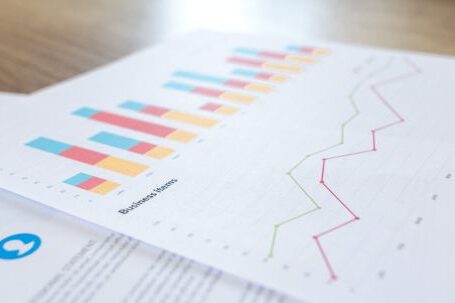In today’s data-driven world, businesses are constantly faced with a deluge of information. It is crucial for organizations to effectively analyze this data in order to make informed decisions that drive growth and success. This is where data visualization comes into play. By transforming complex data into visual representations, business leaders are able to gain valuable insights and make strategic decisions with confidence. Let’s explore the role that data visualization plays in business decision-making.
Enhancing Understanding and Clarity
One of the key benefits of data visualization is its ability to simplify complex data sets and present them in a visually appealing manner. By using charts, graphs, and other visual elements, data visualization makes it easier for decision-makers to comprehend large volumes of information. This enhanced understanding allows business leaders to identify patterns, trends, and correlations that may not be immediately apparent in raw data. With clear and concise visuals, decision-makers can quickly grasp the significance of the data and make more informed judgments.
Identifying Trends and Patterns
Data visualization enables businesses to identify trends and patterns that can provide valuable insights into customer behavior, market dynamics, and operational efficiencies. By visually representing data over time, decision-makers can identify long-term trends, seasonal patterns, and potential anomalies. This information can help businesses adjust their strategies, optimize their operations, and capitalize on emerging opportunities. Data visualization also allows decision-makers to compare different data sets and uncover relationships that may not be evident in raw data. By identifying these trends and patterns, businesses can make data-driven decisions that enhance their competitive advantage.
Facilitating Communication and Collaboration
Data visualization plays a crucial role in facilitating communication and collaboration within organizations. Visual representations of data are universally understood and can be easily interpreted by different stakeholders, regardless of their technical expertise. This makes it easier for decision-makers to present their findings, share insights, and engage in meaningful discussions with colleagues, clients, and other stakeholders. Data visualization also enables collaborative decision-making by providing a common visual language that fosters better understanding and alignment. By sharing visual representations of data, decision-makers can engage in more productive discussions, leading to better-informed decisions and outcomes.
Improving Decision-making Speed and Accuracy
In the fast-paced business environment, timely decision-making is critical. Data visualization allows decision-makers to quickly analyze and interpret data, leading to faster and more accurate decision-making. Visual representations of data provide a comprehensive overview of the information, allowing decision-makers to identify key insights and act upon them swiftly. By reducing the time required to analyze complex data sets, businesses can make decisions in real-time, responding to changing market conditions and customer needs with agility and precision.
Conclusion: Harnessing the Power of Data Visualization
In today’s data-driven business landscape, data visualization is an invaluable tool for making informed decisions. By transforming complex data into visually appealing representations, businesses can enhance understanding, identify trends and patterns, facilitate communication and collaboration, and improve the speed and accuracy of decision-making. As technology continues to advance, the role of data visualization in business decision-making will only become more crucial. By harnessing the power of data visualization, businesses can unlock actionable insights, drive innovation, and stay ahead in an increasingly competitive market.





